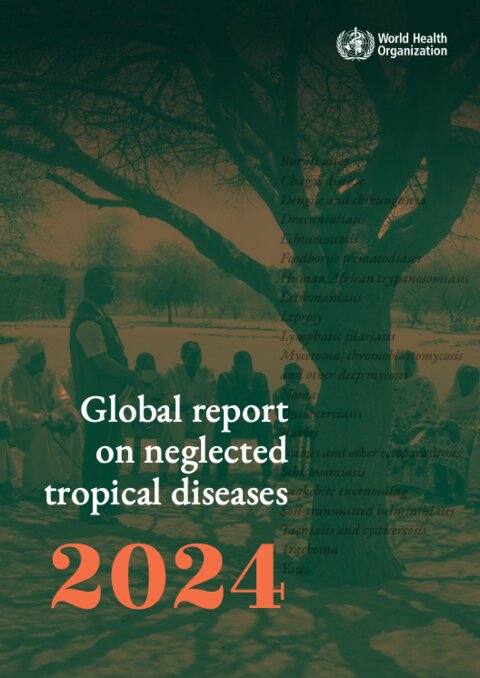WHO | Global report on neglected tropical diseases 2024

The Global report on neglected tropical diseases 2024 depicts encouraging advancements in the battle against NTDs. It highlights key challenges, ranging from a slow post-COVID-19 recovery to funding uncertainties, from geopolitical disruptions to climate change, from gaps in knowledge and tools to insufficient data, to illustrate the complexities inherent in addressing NTDs.
For the first time, a quantitative overview is provided of the status of each of the indicators included in the road map: four overarching indicators, 10 cross-cutting indicators and 55 disease-specific indicators.
Qualitative information is included on progress made regarding each of the three road map pillars: (i) accelerate programmatic action, (ii) intensify cross-cutting approaches, and (iii) change operating models and culture to facilitate country ownership.
Key findings
- In 2022, 1.62 billion people required interventions against neglected tropical diseases (NTDs). Although this reflects a 26% decrease from 2010, it does not provide the required trajectory to attain the road map’s global target of a 90% reduction by 2030.
- In 2023, five countries were acknowledged by WHO for eliminating one NTD, and one country for eliminating two NTDs. As of December 2023, a total of 50 countries have successfully eliminated at least one NTD, marking the halfway point towards the 2030 target of 100 countries.
- In 2022, approximately 848 million people received treatment for at least one NTD through preventive chemotherapy interventions, 49 million fewer than in 2021 but 50 million more than in 2020.
- As of end 2022, the number of reported deaths from vector-borne NTDs has increased by 22% (as compared with 2016).
- Progress made includes a gradual scale-up of the adoption and implementation of integrated skin-NTD strategies (11 countries), of the development of guidance for management of NTD-related disabilities (19 countries), of integration on NTDs in national health plans (28 countries), of inclusion of NTD interventions in packages of essential services (6 countries), of data reporting on all NTDs (32 countries), and of collecting and reporting gender-disaggregated data (17 countries).
- Access to water supply, sanitation and hygiene is overall 85.8% in NTD-endemic countries and 63% among the population requiring interventions against NTDs.
- The share of the population at risk protected against catastrophic out-of-pocket health expenditure due to NTDs is 87.4%.
- In 2023, noma (cancrum oris, gangrenous stomatitis) was added to the list of NTDs.
- NTD medicine donation programmes achieved significant milestones in 2023, delivering 2.1 billion tablets and vials, 200 million more than in 2022. Of them, 994 million were managed by WHO and made available to 112 Member States free of charge.
- In 2023, the offer of normative guidance, capacity strengthening tools and data collection mechanisms was broadened, with the aim of providing Member States and partners with the necessary support to implement, monitor and evaluate NTD programmes.
- Key advocacy events carried out in 2023 included the Global NTD Programme Partners’ Meeting and the Reaching the Last Mile Forum, which raised the visibility of NTDs in the global health agenda and increased resource mobilization.